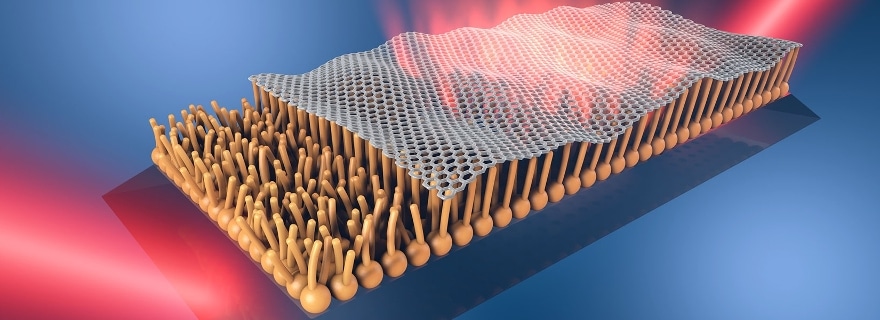Nov 30 2016
 (Credit: Leiden University)
(Credit: Leiden University)
Graphene is an ultra-thin material that is just a single carbon atom in thickness, and has the potential to be used impressive applications such as friction-free, wear-resistant coatings. But first, large sheets of graphene have to be manufactured under precisely controlled conditions.
In a recent study, Dirk van Baarle has explored the way graphene grows at atomic scale and what determines the friction with other materials.
Predictable Quality
A nearly perfectly wear-resistant, friction-free coating in machinery could produce major savings in maintenance and fuel. In nanotechnology sector such coatings will possibly even have applications that manufacturers and researchers are currently not able to predict. Dirk van Baarle studied graphene as a candidate for such coatings. Van Baarle: 'It's quite a challenge to produce graphene of a predictable quality.'
Graphene stays super strong only if the wire mesh of carbon atoms that make up the material are absolutely regular in form. But with the current production techniques, a graphene sheet is in practice nearly always composed of a patchwork of small pieces that have been grafted one above the other. Van Baarle was able to study almost per carbon atom, how islands of graphene grow towards one another, and how this process is impacted by substrate and temperature. This is the first step towards a production technique for creating larger, flawless graphene sheets.
Chicken Wire Pattern
Graphene develops spontaneously when a very clean surface of iridium is exposed to ethylene (C2H4, a hydrocarbon) at a temperature of about 700°C. The gas molecules fall apart on the hot surface, leaving the carbon atoms behind, which spontaneously form a system of linked hexagons, similar to a chicken wire pattern.
Van Baarle used the Variable Temperature Scanning Tunneling Microscope (VT-STM), a unique equipment in the Huygens-Kamerlingh Onnes Laboratory for his research.
This apparatus has a tiny stylus with a point that measures just a few atoms in thickness. It can be used to methodically scan a surface with a great degree of precision that even individual atoms can be identified. The Leiden instrument can achieve this even at variable and high temperatures.
A significant finding is that atomic processes do not only happen in the growing layer of graphene. In reality, the surface of the iridium does not match the atomic layers in the substrate entirely. The iridium forms wide steps on the surface, where the graphene grows over it. But these steps can continue to grow beneath the graphene or can withdraw due to the iridium atoms in the substrate realigning themselves. This process, too, has to be closely monitored for facilitating perfect sheets of graphene to form.
Contact Points
In the theoretical part of his research, Van Baarle prepared a model of how friction happens at atomic level. When two surfaces slide over one another, the real contact points are just nanometers in size, only a very few atoms. The friction is at its highest when the stiffness of the nano-protrusions is approximately average: not too stiff, but also not too soft.
Van Baarle: 'One of my colleagues is currently coating an object with nano-needles using a lithography technique (a technique that is also used for computer chips). These needles vary in stiffness, depending on the direction in which they bend. This means that the friction of the surface is different in different directions.'
This can be practical, for instance, for a coating on a revolving axis, to prevent lateral movement.
Internally we are already using graphene coatings in our equipment to reduce friction without using lubricants. It has already resulted in a patent and a start-up, Applied Nanolayers. No wonder our professor, Joost Frenken, has already won a valorization prize.
Dirk van Baarle